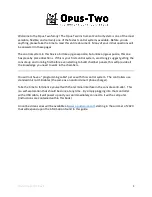
CNR4 Net Radiometer
9
Generally, the errors caused by the heater/ventilator will be small relative to the
errors that would have been caused by water deposition.
6.4.1 CNF4 Specifications
Heater
Power consumption:
10 W @ 12 VDC
(15 Ω)
Ventilator
Power consumption:
Supply voltage:
5 W @ 12 VDC
8 to 13.5 VDC
Weight without cable:
0.5 kg (1.11 lb)
Operating temperature:
–40 to 80 °C
7. Installation
If you are programming your data logger with
Short Cut
, skip Section
(p. 11)
(p. 14)
.
Short Cut
does
this work for you. See Section
(p. 1)
, for a tutorial.
7.1 Siting Considerations
1.
Mount the sensor so no shadows or reflections will be cast on it at any
time of day from obstructions such as trees, buildings, or the mast or
structure on which it is mounted. If the instrument is
h
met
re
s above the
surface, 99% of the input of the lower sensors comes from a circular area
with a radius of 10
h
. Shadows or surface disturbances with a radius < 0.1
h
will affect the measurement by less than 1%.
2.
To avoid shading or reflection effects and to promote spatial averaging,
the CNR4 should be mounted at least 1.5 m above the ground or crop
surface. It is recommended that the CNR4 be mounted to a separate
vertical pipe at least 25 ft from any other mounting structures.
3.
The sensor should be mounted with the cable pointing towards the nearest
magnetic pole. For example, in the Northern Hemisphere, point the cable
toward the North Pole.
7.2 Mounting
A mounting bracket kit is used to mount the CNR4 directly to a vertical pipe,
or to a crossarm. Mount the sensor as follows:
1. Attach the mounting rod to the CNR4 (see FIGURE
















































